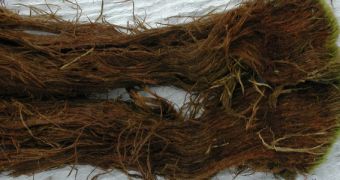According to the conclusions of a new scientific investigation, it would appear that some species of small, soft plants called moss can remain in stasis for centuries, if conditions in their environments abruptly change. This was demonstrated by researchers with Reading University and the British Antarctic Survey (BAS), both in the UK.
The team was able to identify a moss sample that had been buried in Antarctic ices for around 1,500 years. The plants returned to life once researchers arranged for optimal lab conditions to promote their growth and development. They have also found that the Frankenstein moss continued to grow after being revived, as if nothing had happened.
Many scientists have proposed that moss is able to endure century-to-millennial-scale ice ages, but this has never been proven in reality before. This discovery holds very important implications for our understanding of how life developed on Earth, as well as for figuring out exactly how well it is suited for survival on this planet.
The moss sample used in this investigation was recovered from 1,530-year-old permafrost, the research group writes in this week's issue of the esteemed scientific journal Current Biology. Until now, such vast timescales have only been seen in bacteria recovered from submerged or otherwise isolated lakes in some of the world's most inhospitable regions.
A clear example of that are the bacteria discovered in submerged Antarctic lakes, which have been covered by ice millions of years ago, and which still contain bacterial cultures that have evolved rather differently from their counterparts out in the open.
Previous studies have shown that mosses can endure up to 20 years when faced with harsh climate conditions, but no research has until now looked at such long time frames. “What mosses do in the ecosystem is far more important than we would generally realize when we look at a moss on a wall here for instance,” says BAS expert and study coauthor, professor Peter Convey.
“Understanding what controls their growth and distribution, particularly in a fast-changing part of the world such as the Antarctic Peninsula region, is therefore of much wider significance,” he explains.
These conclusions are also important for understanding how plant recolonization occurred following catastrophic events such as ice ages, asteroid impacts, massive volcanic eruptions, and so on. The study suggests that frozen plants may have escaped these bottlenecks and then repopulated the world.
“This experiment shows that multi-cellular organisms, plants in this case, can survive over far longer timescales than previously thought. These mosses, a key part of the ecosystem, could survive century to millennial periods of ice advance, such as the Little Ice Age in Europe,” Convey concludes.

 14 DAY TRIAL //
14 DAY TRIAL //